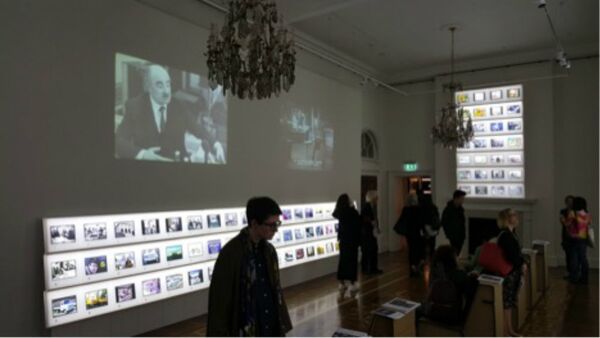Over 30 countries and territories — including Japan, the UK, Russia, and the United States — are presenting at Somerset House in London newly commissioned works that explore the theme Utopia by Design, chosen for the first London Design Biennale.
Utopia or Pent-up Energy?
”We appear to be the only ones at the London Biennale who decided to revisit the history of their design,” Stepanov told Sputnik. “Soviet design was, in many respects, an unfulfilled Utopia but the accumulated energy and ideas have the potential to bear very interesting fruit now and in the future.”
Stepanov’s presentation took the audience back to the days of Imperial Russia to reveal that what was considered to be a backward country pioneered infographics as a means of communicating with the public.

Stepanov recalled that Soviet architects of the 1920s were at the cutting edge of building design and have greatly influenced world architecture while learning from it at the same time. In other areas of design the Soviets were not well known, if at all, and it was a conventional wisdom that design was non-existent in the Soviet Union. The Russian installation at the London Design Biennale has put paid to this misconception. Hundreds of photos of Soviet design projects grace the walls at Somerset House.


The installation based on the forgotten archives of Soviet design was put together by the Moscow Design Museum and has won the London Biennale’s Utopia Medal 2016.
Engaging Infographics
Stepanov, a world-renowned design expert in design also discussed the return to infographics in the design industry and their importance in presenting information in a clear, simple, and easily understandable way, drawing on examples from the ongoing international public opinion project – Sputnik.Polls.
“The London Design Biennale is an excellent event and it is a pleasure to represent the Sputnik design center at it,” said Stepanov. “Sputnik design center is at the cutting-edge of modern design and our various projects and dedication to professionalism keep us there. Just one example is our contribution to the Sputnik.Polls project which sees us provide engaging and useful infographics to support the data.”

Stepanov is a highly successful designer with around 20 years of experience working in design. Having previously worked as a senior art director with Axel Springer, Stepanov joined the Sputnik design center in 2014. Under his leadership, the design center has gone on to win several prestigious international competitions in design and infographics, including the Annual Communicator Awards in both 2015 and 2016 as well as the European Design Awards 2015 for his work on infographics on the Berlin Wall.
He told Sputnik UK that all the countries exhibiting at the first London Design Biennale have managed to convey their very essence in their installations, and that he was sure that those who attended the Russia Day would certainly understand a little bit more about Russia.



